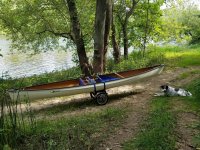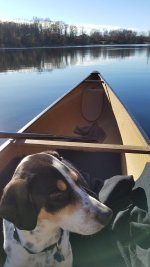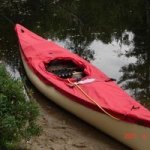Any opinions? Thanks.
G.
G.
Thanks for the answers so far. Looking for an open canoe and under 40 lbs for portaging.



Despite its relatively low freeboard, it is a dry boat (I have paddled the north shore of Lake Superior in it without taking on more than a few small dollops in the most severe conditions one would like to paddle in) and the sculpted tumblehome midships allows good stroke mechanics despite the boat's 30 inch maximum beam.
John Winters' comments on the Osprey... no sure what his criteria are for "most severe conditions". His comments might be about twenty years old and earlier than that Bill Mason was paddling Superior in something more traditional.
IIRC Lightjay (Jay Morrison) reported broaching problems in an Osprey while paddling Temagami.
http://www.greenval.com/osprey.html
BUT - it does have a reputation for being hard to control in a strong quartering tailwind...the stern has a strong tendency to want to blow around and you end up parallel to the waves. Bill Swift says it just needs to be trimmed correctly but mine has a sliding seat with lots of trim adjustment and I'd still say it's fussy in a strong quartering tailwind. I think it might be prone to the "moving center" effect where the center of rotation moves forward as you go faster (Osprey is almost constant width through the center of boat and lacks the fat middle of most canoes). Even in strong wind when I'm surfing waves and the boat may spin out I can just start over and go slower.
Fabric decks, Northwater, Cooke Custom Sewing or cunningly DIY’ed, on a sea kindly canoe would be a lot less expensive as a possible solution.
No idea how well the Wenonah Argosy fits the “sea kindly” bill in heavy seas/broaching conditions.

